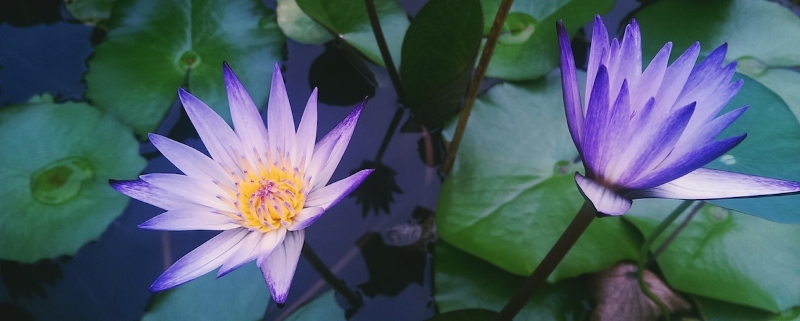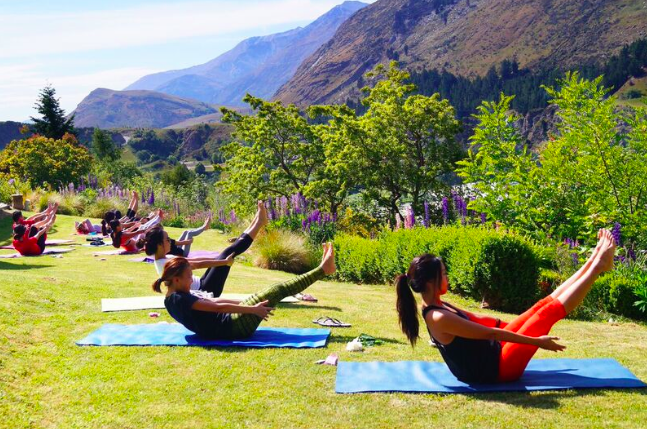
Aprivé Wellness Blog
Pilates Moves To Master Now
Pilates is for everyone of all ages - yep that means you too boys! Pilates is a really great way to enhance your posture, tone up and work your core. Here are the top Pilates moves you need to try now!
Scissors - Great for deep core activation
This exercise is a good core workout, plus it works to strengthen the deep neck flexors to improve your posture!
Lie on your back and float your legs up to tabletop
Tap one toe to the ground, then lift it back up
Tap the other toe to the ground
For more of a challenge, tap the toe further away from you
2 x 12
2. Walking Plank - Great for improving your posture
Planks can get a bit static, so make yours a walking plank!
From your hands and knees, press up into a hover lifting your knees 1 inch up off the ground
Press the ground away and lift your head and neck away from the ground
Step your legs back to a plank one by one
Then step back to your hover. Resist the urge to hang your head, this is how you improve your head and neck posture!
Try 2 sets of 5 steps. You got this!
3. Ab Roll Up - A great ab workout
This one is tough!
Lie on your back with your arms out long and your legs stretched out
Float your hands up above your face
Use your abs to roll you all the way up to sitting
Try to keep your shoulders relaxed and away from your ears! You can do it!
Try 5 roll ups.
4. Book Openings - Relieves stiffness in the middle back
If you get tight in the thoracic spine (middle back) you’re not alone. Sitting all day at a computer creates so much stiffness in the middle back. The best remedy is a gentle rotation.
Lie on your side and glute your knees together
Put your hands on top of each other (like a crocodile mouth) and open one arm all the way out, then back in.
If you feel any pins and needles in your hands, bend your elbow and open with the elbow instead of a straight arm.
1 set of 8 on each side.
5. Pelvic Tilts - Great to release stiffness in the lower back
Lie on your back and plant your feet hip-width apart
Imagine you have flashlights on your pelvic bones and roll your pelvis forwards and backwards
You’ll feel your pelvis rolling which also mobilises the joints in your lumbar spine
2 x 5 slowly
Wanna try a Pilates class for Free? Check out my Youtube channel! It’s full of free classes covering everything from how to improve your posture to how to strengthen your glutes.
Pilates vs. Yoga - What Everyone Ought to Know
As a runner, it’s great to blend low impact, meditative exercises with running training to help you get stronger. The age-old debate of choosing between Pilates and Yoga continues, so let’s see which of the two is most helpful for improving strength in muscles needed for running…
Pilates vs. Yoga for Runners
As a runner, it’s great to blend low impact, meditative exercises with running training to help you get stronger. The age-old debate of choosing between Pilates and Yoga continues, so let’s see which of the two is most helpful for improving strength in muscles needed for running…
Me getting ready for a run in Queenstown, New Zealand. Yes it was chilly!
Pelvic Stability: Yoga & Pilates
Pelvic control and strength is hugely important in controlling your running gait, decreasing injuries and increasing running efficiency. All of the things that every runner wants!
Good pelvic stability means the muscles around the pelvis are very strong. Strong enough that they prevent excessive movement happening at the pelvis. Running involves a period of time where only one foot is on the ground which means the entire body is supported from only one side. If the unsupported side of the pelvis slips down, every pelvic joint is placed under excessive stress while it tries to keep your body together! (Read more here)
Yoga works to strengthen the pelvis in single leg standing poses, as this really works the pelvic muscles. Single leg poses like Warrior 3, half moon, and dancer’s pose or Natarajasana are perfect for developing pelvic strength and stability.
Helen of Studio Sangha shows us how it's done.
Pilates emphasises pelvic stability with any exercises in side lying that work the gluteus medius really hard, a vital muscle that stabilises her hip during running. Exercises like bridges, side planks and side rotations, clams, single leg squats on reformer, single leg straps on reformers and any standing balance series will all help with your pelvic stability.
Single leg bridging during an Aprivé Wellness Retreat
Quad Strength: Pilates
The quadriceps are very active during running, and help to both stabilise the knee and generate power through the leg.
Yoga works the quads in poses where the knees or knee is bent like chair pose and warrior pose. The quads are also activated in standing poses when your kneecap is activated or you “lock the knee” but it’s a static activation. Rather than repetitive strengthening of the quads through changes in muscle length, quads strengthening in yoga is more static or isometric.
Healthy Hens party guests striking an impressive warrior pose
Static strengthening in yoga during a wellness retreat
In contrast, Pilates strengthens and lengthens the quadriceps. Bridging, standing series in squatting, side lying leg extensions on reformers and legs in straps all use low impact quadricep loading to strengthen this vital muscle group throughout its lengths. Pilates helps strengthen the quads without pain, making it the perfect way for runners with knee pain to regain correct kneecap alignment, or to rehabilitate knees after surgery or replacement. Strengthening a muscle at different lengths is more functional and useful for running.
Calf Strength: Yoga
The gastrocneumius and soleus are your calf muscles that work to plantar flex your feet - or essentially point your toes. They also help you generate power when you push off from the ground in running, and are the chief muscles that help you increase your running stride length.
In yoga, you find yourself standing a lot and moving from the ball of your foot to standing flat footed. These transitions require the calf to activate, and help you stand on your tip toes. Bikram poses like awkward pose and the stand pose rely on calf strength for stability. They also help enhance your ankle strength and biofeedback which is important for running on uneven surfaces like grass and outdoor running trails. Yoga also lengthens the calf very effectively during downward dog, perfect for those runners who get tight calves.
Downward dog during a healthy hens party in Queenstown
Pilates works on strengthening your calves with calf raises and pointed toe positions, but the reliance on ankle stability and changes in calf length aren’t as great as yoga. The exception is if you have a specific calf- heavy Pilates workout created for you, as I have done for patients with ankle injuries and calf tears.
Core strength: Pilates
In runners, core strength:
Helps to prevent lower limb injuries (save on the physio bill!)
Works to maintain leg alignment (no more sore knees)
Increases spinal stability (forget that lower back pain)
Sounds good right? Core strength is so important in runners and can elevate your running from being good to phenomenal. Not only does core strength help your torso stay strong, it stabilises your entire body so your lower leg muscles are actually more powerful. Your core is a group of muscles that help your spine and pelvis stay stable throughout movement, and includes muscles like the transverses abdominus (TA) multifidus and pelvic floor.
To learn how to activate your core, and how to find it, read more here.
Teaching core activation during a health and wellbeing retreat with Aprivé Wellness
Plank pose during a yoga/Pilates fusion class at one of our retreats
The essence of Pilates is core activation and stability. In every Pilates class, you should be working to keep your spinal curve in neutral, and not let your lower back rise off the floor when you’re doing exercise lying on your back. All Pilates exercises require you to activate the deep abs (TA) for stability, and help you get a strong core from repetitive classes. Remember though, your core doesn’t ‘turn on’ automatically, unlike a bicep. You need to consciously activate it, and your Pilates instructor can help you with this.
Pilates teaser at a healthy hens party in Queenstown
Whether you love Pilates or Yoga, both have benefits for runners. If you like both, Pilates can be a great way to work on specific aspects of your training that need conscious improvement, while yoga can be a way to relax while exercising without focusing on specific developments. Once you find a good instructor, the benefits you get from Yoga and Pilates are huge, and your running will improve!
*Please always see a Physiotherapist and Dr if you have an injury or complaint. This article is not to be used as medical advice.
















